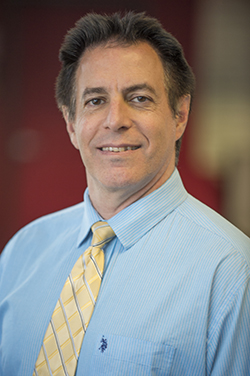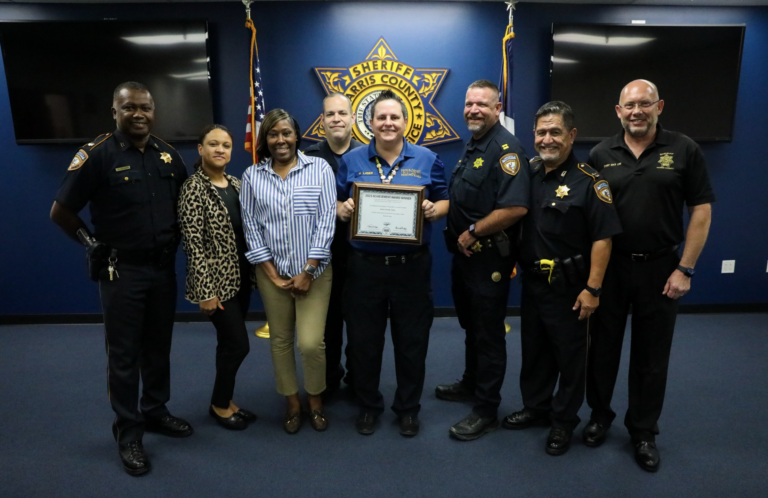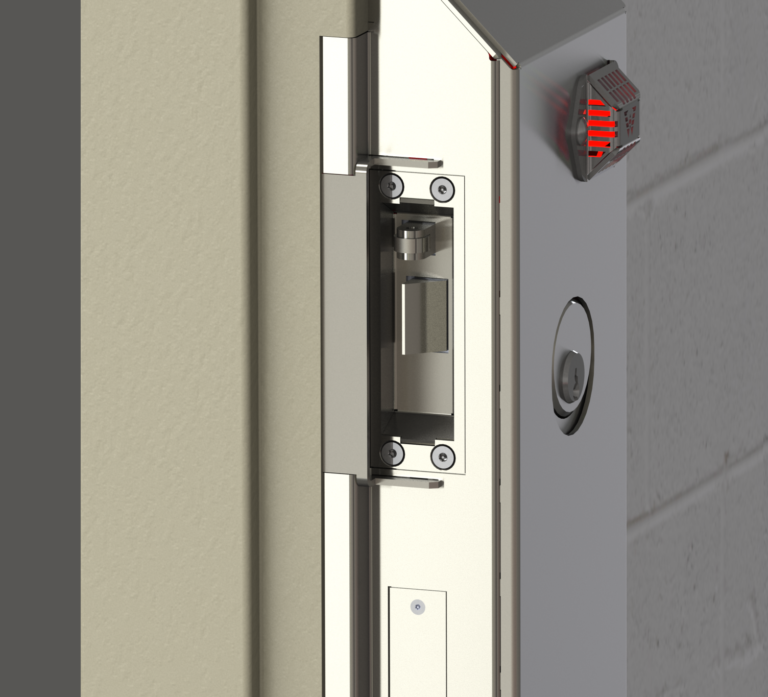Staying Focused at Arrington Watkins
 Peter Sangiorgio has been a justice architect since 1995 and has been responsible for the design of large-scale projects throughout the U.S. with Phoenix-based architecture firm, Arrington Watkins. The firm, created in September 1994 by respected architects, David Watkins and Lynn Arrington, hired Sangiorgio as one of its first employees.
Peter Sangiorgio has been a justice architect since 1995 and has been responsible for the design of large-scale projects throughout the U.S. with Phoenix-based architecture firm, Arrington Watkins. The firm, created in September 1994 by respected architects, David Watkins and Lynn Arrington, hired Sangiorgio as one of its first employees.
One of Sangiorgio’s first designs was a 200-bed expansion at the Arizona State Prison Complex (ASPC) in Globe, Ariz. As project manager, principals Arrington and Watkins entrusted his expertise enough for him to run the project from start to finish. With the success of the project, and his take-charge leadership abilities, he then began working on larger justice projects. In 1996, he worked on the Lewis Juvenile Facility and Yuma State Complex expansions in Arizona. He was one of the main architect’s responsible for the design of the 800-bed Yuma expansion project.
“I worked on the [Yuma] design from napkin-concept sketches all the way through to construction administration,” Sangiorgio said about the 2.5-year project.
Of the many justice projects Sangiorgio has completed, his most memorable justice project began in April 1999 at the High Desert State Facility for the state of Nevada.
“I am one of very few people that has been involved with all six phases of that project, which includes Phase I and Phase II, which began in April of 1999, all the way through Phase IV for which design was completed in June 2011.”
Sangiorgio explained that the project in Nevada helped the firm maintain a lasting relationship with the state, and they are currently working on the master plan for the entire Nevada Department of Corrections system. He is also working on the design of the Churchill County Detention Center expansion located in Fallen, Nev.
Changing Times
Throughout his years in the justice design industry, Sangiorgio has seen change firsthand. While some of the changes he has seen are improving end results, other changes have him uncertain for the future.
One of the major changes or noticeable trends that he has seen lately is a bigger focus on housing and treatment of mentally ill inmates. He explained that focusing on this type of inmate or patient is changing the way designers plan facilities. Other changes include a push to incorporate more energy-efficient and sustainable features into facilities, new designs for aging populations and a more concentrated look at becoming more involved in international markets. Some of the more daunting trends or shifts that Sangiorgio is seeing includes state and county budget issues and the concern of the justice market not having a strong young professional backing to support the older generations who are currently leading the design, construction and manufacturing of products for justice facilities.
“There is a huge amount of talent that will be leaving this industry in the next several years, and we can only hope that their knowledge is somehow captured before they exit the industry,” he said.
He also explained that because of state financial woes, many states have abolished community supervision, which in turn creates a lack of supervision for tracking parolees.
“What needs to occur is that there needs to be some day reporting facilities where inmates can go to a central location for additional training and development of marketable skills as a step in the reduction of recidivism,” he said.
 When Sangiorgio first started his career, he said that many of the projects were “softer” in appearance and materials, which included wood doors, carpeting and lighter/softer finishes and accent colors in facilities. However, over time, facility administrators noticed that these types of materials could not withstand the wear and tear of a correctional facility. The shift then went back to a more “hardened” feel, according to Sangiorgio. Currently, design is at a point where the look and feel is much more approachable, but the materials are still strong and durable so the security and durability of these facilities is not compromised, Sangiorgio explained.
When Sangiorgio first started his career, he said that many of the projects were “softer” in appearance and materials, which included wood doors, carpeting and lighter/softer finishes and accent colors in facilities. However, over time, facility administrators noticed that these types of materials could not withstand the wear and tear of a correctional facility. The shift then went back to a more “hardened” feel, according to Sangiorgio. Currently, design is at a point where the look and feel is much more approachable, but the materials are still strong and durable so the security and durability of these facilities is not compromised, Sangiorgio explained.
“There have been a ton of new products and systems that have hit the market from the time I first started in the justice sector until now,” he said. “This includes the refinement of steel wall panels and steel cells, advances in the concrete box industry, security locking systems, the evolution of the security electrical systems from the old hard-wired panels to touch-screen systems, security staff management philosophies such as unit management and controlled movements, and perimeter fence detection systems.”
Finding Balance
While the changing atmosphere of corrections has had its ups and downs, Sangiorgio seems to stay grounded and focused through one of his true passions: martial arts training. Besides being a successful justice architect, Sangiorgio is also a fourth-degree black belt and trains almost daily at the Paradise Valley School of Karate in Arizona under Sensei Mike Wall. His karate practice not only keeps him in physical shape, but it has also trained his mind to stay focused through personal and professional challenges.
“Two of my main instructions to my students is to ‘relax and breathe,’” he said. “Many times I need to follow my own advice. My martial arts training has helped me deal with the stressful situations that occur in our industry.”
Through his training he has learned to properly multi-task and also look at his leadership role a bit differently.
“As a principal and leader of this company, martial arts has taught me that students do not all learn the same,” he explained. “Some get it right away, but with others you have to spend more time and break things down into further detail. I have taken this philosophy and continue to use it as I teach and mentor our great staff at Arrington Watkins.”
This article was originally published in the May/June issue of Correctional News.






